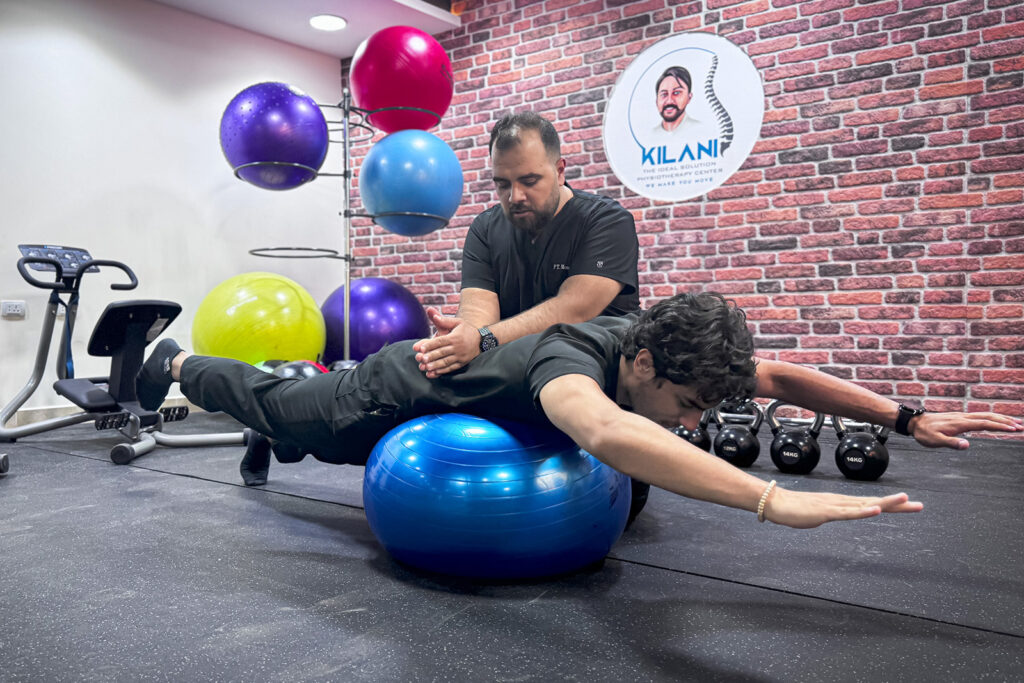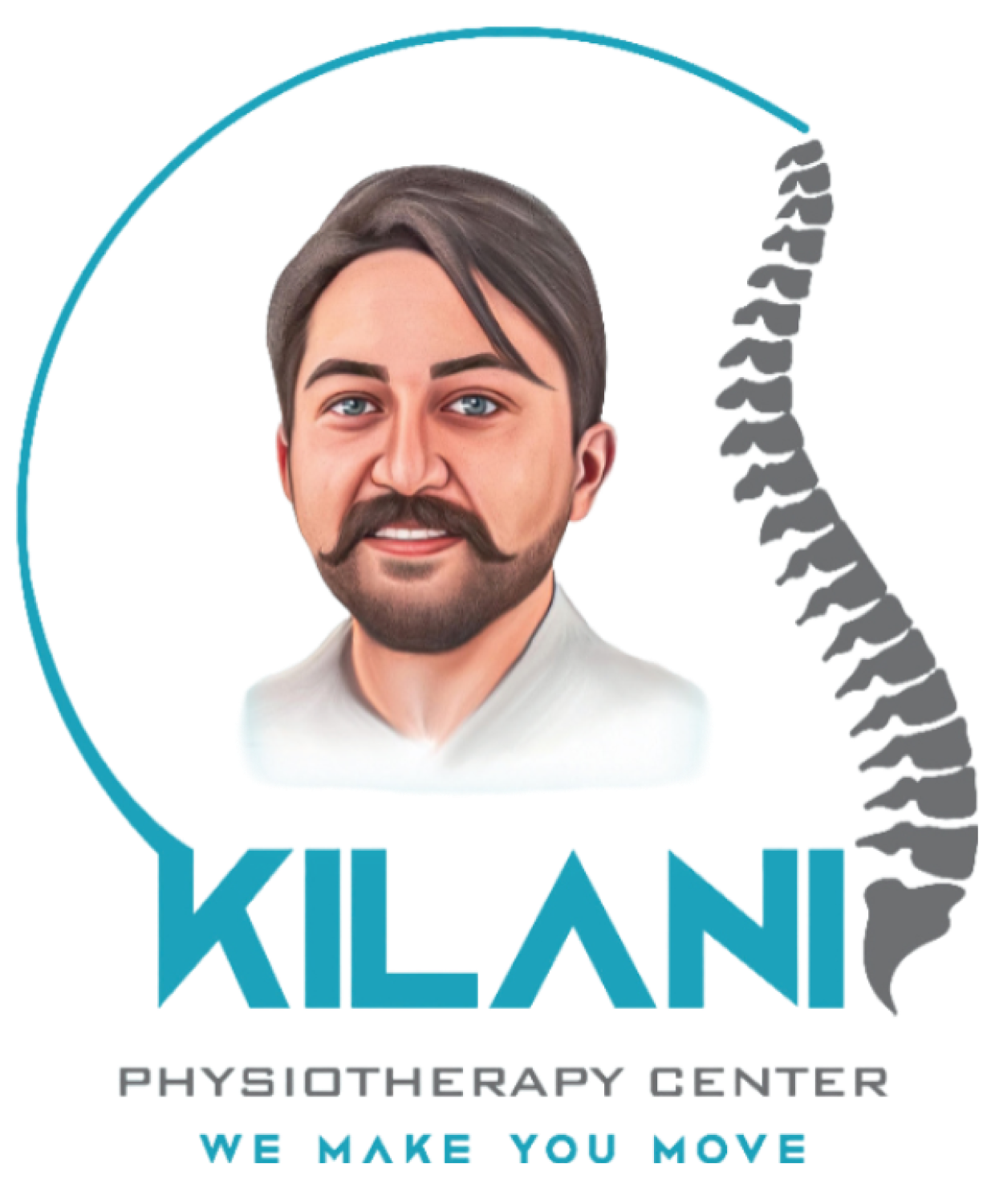The Hidden Layers of Lower Back Pain: A Holistic View
Kilani
October 14, 2024

Lower Back Pain Treatment of the Hidden: A Holistic View
Understanding the full impact of lower back pain means looking beyond muscle strain or a disc issue. Physiotherapists recognize that pain often involves a chain reaction across multiple systems in the body. With this holistic understanding, physiotherapy doesn’t just focus on the back itself but also considers how the hips, core, posture, and daily movements contribute to, or alleviate, pain.
Physiotherapists dig deeper to uncover unique factors contributing to each person’s back pain, whether it’s prolonged sitting, weak core muscles, or even stress—yes, stress can manifest physically, including as lower back pain.
Beyond Exercises: The Role of Movement Re-Education
Many people think physiotherapy for lower back pain is just a series of exercises. While exercises are crucial, a unique and often underestimated element is movement re-education. Over time, your body adapts to certain movement patterns, and when these patterns are flawed, they put extra stress on theLower Back Pain
lower back pain treatment Rewiring Movements
Lower Back Pain Treatment with Physiotherapists work with you to retrain everyday movements—how you bend, sit, lift, and even breathe. Here’s how it works:
Functional Movement Screening: Your physiotherapist may start by observing your daily movements to identify patterns that strain the back.
Gradual Adjustment: Through gentle exercises and postural cues, they help you replace harmful movement patterns with more ergonomic ones.
Mindful Movement: Using mindfulness principles, physiotherapists guide you to stay aware of your body mechanics, ensuring your movements protect your back both during therapy and in real life.
Lower Back Pain Treatment Targeted Manual Therapy: A Personalized Touch
Lower back pain isn’t one-size-fits-all, and neither is manual therapy. Skilled physiotherapists go beyond generic massages to employ targeted manual techniques, including:
Myofascial Release: A specialized technique that focuses on releasing tension within the fascia (the connective tissue surrounding muscles) to ease chronic lower back pain.
Joint Mobilization: Gentle joint mobilizations restore movement in restricted areas, helping to relieve pressure on surrounding tissues.
Neurodynamics: For patients whose back pain is connected to nerve issues like sciatica, neurodynamic mobilization helps relieve nerve tension that’s often at the root of radiating pain down the leg.
Each technique is tailored to the individual, meaning that what works for one person may look entirely different for another. This customized approach, guided by your body’s specific needs, is key to effective relief.
Core Stability, Not Just Strengthening: Building a Strong, Stable Foundation
It’s common knowledge that core strength supports the spine, but there’s more to it than crunches and sit-ups. True core stability involves training your deep stabilizing muscles, including the transversus abdominis and the pelvic floor, which hold your spine steady during movement.
Lower Back Pain Treatment Beyond Basic Core Exercises
Dynamic Stability Work: Instead of isolating the core, therapists integrate these muscles into functional, whole-body movements, like controlled squats or single-leg stands, which better mimic real-life actions.
Balance and Proprioception Training: These exercises help improve body awareness, teaching the core muscles to “switch on” and stabilize the spine during movements.
When the core can efficiently stabilize the Lower Back Treatment , it acts as a buffer against sudden twists or impacts, reducing the risk of further injury.
Integrating Mind-Body Techniques: Stress and Pain Management
Stress isn’t just mental—it manifests in the body, often as muscle tension in the neck, shoulders, or lower back. Many physiotherapy centers now integrate relaxation techniques like diaphragmatic breathing, progressive muscle relaxation, and even mindfulness exercises as part of the healing process.
By managing stress in conjunction with physical treatments, patients often experience:
Reduced Muscle Tension: Lessening chronic tightness that can worsen back pain.
Improved Focus on Movement Patterns: Mindfulness helps patients be more present, making it easier to maintain proper posture and body mechanics.
lower back pain treatment Long-Term Prevention: Lifestyle Coaching for Lasting Results
Lower Back Pain Treatment One of the most unique aspects of physiotherapy is the focus on long-term prevention. While many treatments aim to alleviate immediate pain, physiotherapists emphasize lifestyle modifications that help you maintain a healthy back over time. This may include:
Ergonomic Assessments: Physiotherapists assess your workspace or home environment and recommend adjustments to reduce strain on your back.
Personalized Exercise Routines: These routines are designed not just for pain relief but for ongoing back health, tailored to fit into your daily schedule.
Activity-Specific Coaching: If you’re a runner, golfer, or cyclist, your therapist can provide tips to optimize your form and prevent future injuries.
A Collaborative Approach: You and Your Physiotherapist
The real power of physiotherapy in Lower Back Pain Treatment lies in the collaboration between therapist and patient. Physiotherapists don’t just hand out exercises; they educate, empower, and work alongside you to understand your body’s unique needs. This teamwork approach makes it possible for you to take an active role in your recovery, leading to a faster and more sustained return to pain-free living.
Take the First Step Toward a Pain-Free Life
Lower Back Pain Treatment doesn’t have to be a lifelong battle. Through a personalized, holistic approach that addresses movement patterns, body mechanics, and lifestyle habits, physiotherapy offers a path to long-term relief and well-being. If you’re ready to overcome back pain and regain control over your life, consider consulting with a physiotherapist who can guide you every step of the way.
Lower Back Pain Treatment Final Thoughts
Remember, every journey to pain relief is unique, and so is every physiotherapy plan. With the right guidance, you can achieve not only relief but also the strength and confidence to move freely and without fear. Start today—your back will thank you.
Back pain can also stem from neck issues—read more about cervical disc disorders.

